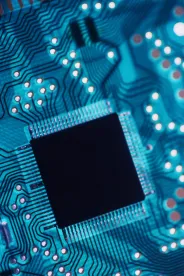What We’re Watching: Disruptive Technology Strike Force
On February 16, the U.S. Department of Justice (DOJ) and U.S. Department of Commerce announced the creation of a Disruptive Technology Strike Force, which will be co-led by DOJ’s National Security Division and Commerce’s Bureau of Industry and Security (BIS). The goal of this strike force is to “target illicit actors, strengthen supply chains, and protect critical technological assets from being acquired or used by nation-state adversaries.” In an accompanying press release, DOJ describes the People’s Republic of China, Iran, Russia, and North Korea as “nation-state adversaries.”
-
Scope of work: According to DOJ, the scope of the strike force’s work includes: investigating criminal violations of export laws; enhancing enforcement of U.S. export controls; fostering partnerships with the private sector; coordinating law enforcement actions through international partnerships; utilizing data analytics and intelligence to develop and build investigations; conducting trainings for field offices; and strengthening connectivity between the strike force and the Intelligence Community
-
Eyes on advanced technologies: DOJ emphasized the importance of advanced technologies—such as supercomputing, artificial intelligence, advanced manufacturing equipment and materials, quantum computing, and biosciences—to national security in a press release. DOJ indicated that if acquired by nation-state adversaries, such technologies could be used to improve calculations in weapons design; improve the speed and accuracy of military decision-making; and break or develop unbreakable encryption algorithms that protect sensitive communications and classified information.
-
Why it matters: This is another example of how the administration has scaled-up its use of export controls to generate desired outcomes in the areas of technology security and competitiveness vis-à-vis China. This specific development reflects a desire by the administration to institutionalize a “whole of government” approach to its export control and enforcement policies.
In Case You Missed It
-
CHIPS Act on the move: On February 17, the U.S. Department of Commerce announced leaders and staff joining the CHIPS for America team who will play key roles implementing the bipartisan CHIPS and Science Act’s historic investments in the semiconductor industry.
-
What’s next: On February 23, Secretary of Commerce Gina Raimondo will deliver remarks at Georgetown’s Center for Security and Emerging Technology (CSET). In her speech, Secretary Raimondo will outline the administration’s vision to deliver on the opportunity the CHIPS Act presents to protect U.S. national security and create a lasting innovation ecosystem for the coming decades.
-
-
China’s latest counterstrategy: Key members of China’s most influential scientific body have outlined the country’s plan to avoid U.S. chip sanctions, shedding light on how Beijing can win a technological race with Washington. Specifically, they advocated for (1) stabilizing the group of basic semiconductor research; (2) encouraging theoretical innovations in semiconductor technology; and (3) formulating strategies to amass a portfolio of patents that govern the next generation of chipmaking, from novel materials to new techniques.







 />i
/>i
